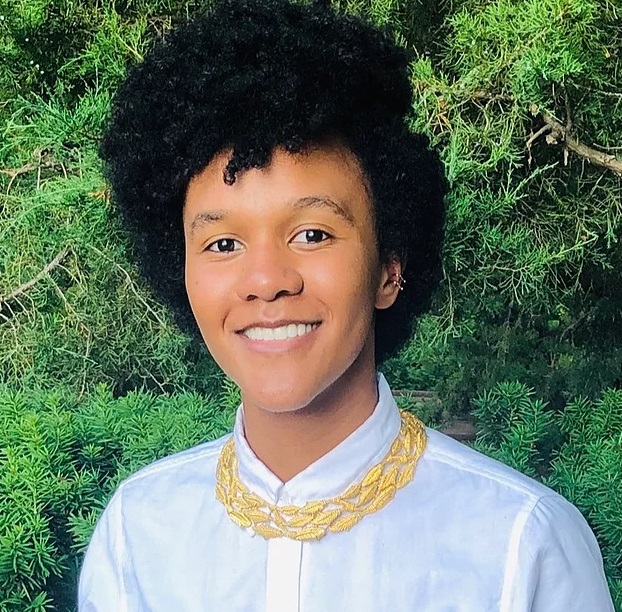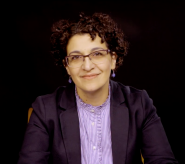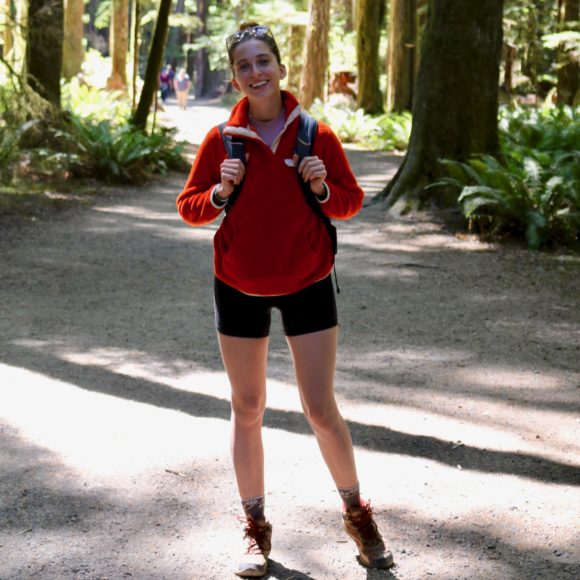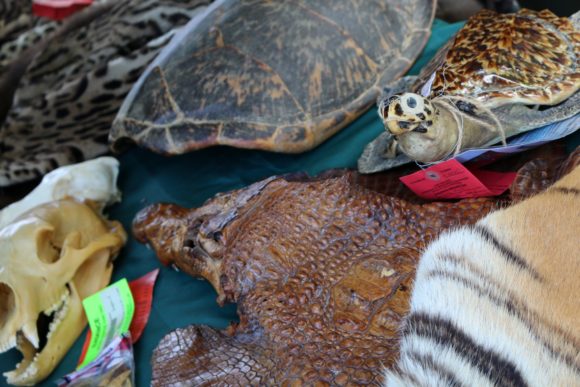Home » Posts tagged 'criminological theory'
Tag Archives: criminological theory
New Faculty Spotlight Interview: Prof. Alessandra Early

Professor Alessandra Early is an assistant professor of Criminal Justice at John Jay College and a dedicated criminologist whose academic journey is rooted in a passion for understanding the intricacies of human behavior and identity. From a childhood curiosity that questioned the fundamental nature of numbers to becoming a professor, her commitment to knowledge has been unwavering. With a background in psychology and sociology, she transitioned to criminology, driven by a fascination with the dynamics explored in shows like Criminal Minds.
Dr. Early’s research delves into the intersection of spatial dynamics, identity formation, and behavior, particularly focusing on queer experiences and the impact of social spaces. In this Q&A, Dr. Early shares her insights into research, professional achievements, mentoring philosophy, and her vision for contributing to the academic community.
Can you share a bit about your academic journey and what led you to pursue a career in criminology?
Since I was young, I’ve wanted to help people and investigate the “hows” and “whys” behind everything around me. As a kid learning math, I peppered my mother with questions incessantly, completely unsatisfied with the superficial and desperately seeking to learn a greater meaning. “Why is a one a one?” I asked. “What makes a two a two?” That pursuit of knowledge has become a core mission in my life and led me to become a professor today.
As an undergrad, I majored in psychology and sociology. I fantasized about becoming an FBI profiler thanks to my obsession with Criminal Minds, and I kept finding myself drawn to criminology courses. That tendency persisted when I pursued my master’s in sociology as well; I really connected with some professors who really believed in me and my work. I decided to follow that path and complete my PhD in criminology and criminal justice. (Though I moved away from law enforcement.)
Being a professor means I always have to adapt and evolve as new knowledge develops, which I love. I enjoy reading, learning, and problem-solving and my job asks me to engage in all three. Interacting with students is such a privilege because I want them to have the same light-bulb “Aha!” moments in my classrooms that I used to experience as a student myself.
Could you highlight some of your key research interests or projects, and how do you see them contributing to your field or broader society?
Broadly speaking, my research is rooted in three intersecting areas: Spatial and place-based dynamics, identity formation, and behavior. Specifically, I am interested in the ways in which spaces, particularly social spaces, impact how people understand themselves and can encourage or inhibit behavior. My dissertation, for example, explored how the historical, social, and cultural spatial dynamics of queer social spaces (such as bars and clubs), and using substances within them, can impact queer identities. One finding was that queer people strategically used substances to explore their identities and navigate queer vs. heterosexual social spaces.
Another project investigated the interplay between space(s), identities, and substance use through the experiences of primarily white heterosexual women who had experience with the rural methamphetamine market before being incarcerated. We emphasized the complex, violent, and empowering strategies that women used to confront and overcome gendered and sexualized expectations while participating within the patriarchal market.
My research interests engage in “queering” or destabilizing normative understandings of how we move through our environments, create meaning within them, formulate our identities in opposition to or with the help of those environments, and how those environments and the meanings we prescribe to them encourage or inhibit our behaviors.
Have there been any significant milestones or achievements in your professional journey that you are particularly proud of?
Currently, I’m most proud of my paper, The Role of Sex and Compulsory Heterosexuality Within the Rural Methamphetamine Market, which was published in Crime & Delinquency. Because of the precarious nature of grad school, sometimes it’s hard to see a project from inception to completion. To my and my co-author’s knowledge, this article represents the first paper to apply a queer criminological framework to examine the experiences of primarily cisgender and heterosexual white women. In 2022, the paper earned first place in the inaugural student paper award from the Division of Queer Criminology at the American Society of Criminology.
Do you have a mentoring philosophy, and how do you envision supporting students in their academic and professional development?
I approach teaching as a way to co-construct knowledge with students, with the goal of transforming the classroom into an encouraging space and making the material relatable and accessible. My mentoring philosophy builds upon that same foundation, emphasizing a collaborative and comfortable environment that I strive to offer all my mentees. I often describe my personal experiences with employing particular methodologies, concepts, or theories in order to demystify learning and the process of conducting research. In one-on-one student conversations and larger panel events, I speak candidly and transparently about the joys and challenges of being a Black queer woman in academia. While at conferences, I carve out time to bond with my mentees and ensure that I introduce them to fellow academics who share their interests to encourage networking and professional advancement. I let them know that my door is always open.
How do you envision contributing to the growth and development of our academic community in the coming years?
Although I have only spent a few months here at John Jay, I’m currently working to develop new courses that consider the ways in which queerness intersects with the carceral system and deepen our understanding of qualitative methodologies. I also look forward to carving out pathways that combine critical analyses and intersectional education.
Outside of academia, what are some of your hobbies or interests?
Outside of academia, you can find me practicing Matsubayashi Shorin-Ryu karate and Matayoshi Kobudo (traditional weapons). Currently, I am a Shodan (1st-degree black belt) and I am preparing for my Nidan (2nd-degree black belt) test in the fall of 2024! I’ve also recently rekindled my love for video games (after a long hiatus during graduate school) and I’m back to gaming with my friends!
If you could give one piece of advice to students aspiring to excel in your field, what would it be?
Throughout my educational career, I have always carried my grandmother’s mantra and work ethic, which is the best advice I’ve ever received: Good, better, best. Never let it rest until the good is better and the better is the best. Though I’d make one small amendment — rest is important! Be sure to take breaks, but keep those intellectual fires burning.
Using Crime Science to Fight for Wildlife
There is no question that the fashion industry causes great harm to the environment. The industry’s faddish nature, combined with the overproduction of low-cost, low-quality pieces, is designed to encourage overconsumption. Production of fast fashion garments eats up precious resources, like clean water and old-growth forests, and discarded clothing can sit in landfills for hundreds of years, thanks to synthetic materials used in construction.


According to scholars Monique Sosnowski—a Ph.D. candidate in criminal justice at the CUNY Graduate Center—and John Jay Assistant Professor of Criminal Justice Dr. Gohar Petrossian, pollution is not the fashion industry’s only crime. In a new article, they investigated what species were being utilized for the fashion industry, which is worth over $100 billion globally, in order to better understand the damage the industry causes to wildlife and wild places.
Sosnowski and Petrossian looked at items imported by the luxury fashion industry and seized at U.S. borders by regulatory agencies between 2003 and 2013. Their study found that, during that decade, more than 5,600 items incorporating elements illegally derived from protected animal species were seized. The most common wildlife product was reptile skin—from monitor lizards, pythons, and alligators, for the most part—and 58% of confiscated items came from wild-caught species. The authors also found that around 75% of seizures were of products coming from just six countries: Italy, France, Switzerland, Singapore, China and Hong Kong. The heavy involvement of the European countries was unexpected, according to Dr. Petrossian, because they are key players in fashion design and production but “don’t generally come up in broader discussions on wildlife trafficking.”
THE SCIENCE OF WILDLIFE CRIME
The paper applied “crime science, a body of criminological theories that focus on the crime event rather than ‘criminal dispositions,’ to understand and explain crime. The overarching assumption is that crime is an opportunity, and it is highly concentrated in time, as well as across place, among offenders, and victims,” says Dr. Petrossian. Their scientific approach enabled the authors to analyze patterns and concentrations in wildlife crime, which Sosnowski notes is among the four most profitable illegal trades.
“We are currently living in an era that has been coined the ‘sixth mass extinction,’” she says. “It is crucial that we understand the impact that humans are having on wildlife, from habitat loss to the removal of species from global environments. Fashion is one of the major industries consuming wildlife products.”
A background in wildlife conservation, including unique experiences like responding to poaching incidents in Botswana and rehabilitating trafficked cheetahs in Namibia, led Monique Sosnowski to a Ph.D. in criminology; she wanted to move beyond a more traditional conservation-informed approach to address what she’d seen in the field. Working with Dr. Petrossian on a series of studies applying crime science to wildlife crimes has given her a broader view of the effects of wildlife-related crime on global ecosystems.
CREATING SOLUTIONS, SAVING WILDLIFE

Why is it important to understand what species are most commonly used in luxury fashion products, and where they are coming from? A study like this one provides information about trends that policymakers can use to strengthen or focus enforcement and inform better understanding of the issues. Sosnowski calls this “the key to devising more effective prevention policies.”
Currently, global regulation of the trade in wildlife products, including leather, fur, and reptile skin that come from species both protected and not, is the province of the Convention on International Trade in Endangered Species (CITES); this treaty aims to ensure that international trade in wild animals and plants does not threaten their survival. But the treaty is limited in scope.
“Given the prevalence of exotic leather and fur in fashion, we believe CITES and other regulatory bodies should enact policies on its use and sustainability in order to protect wild populations, the welfare of farmed and bred populations, and the sustainability of the fashion industry,” Sosnowski says.
Consumers also have a role to play. “We are all led to believe that products found on the shelves are legal, but as this study has demonstrated, that isn’t always the case. Consumers of these products are the ones who have the power to change the behaviors of a $100 billion industry. We need to ask questions about where our products were sourced, and respond accordingly.”
###
Summarized from EcoHealth, Luxury Fashion Wildlife Contraband in the USA, by Monique C. Sosnowski (John Jay College, City University of New York) and Gohar A. Petrossian (John Jay College, City University of New York). Copyright 2020 EcoHealth Alliance.



Recent Comments